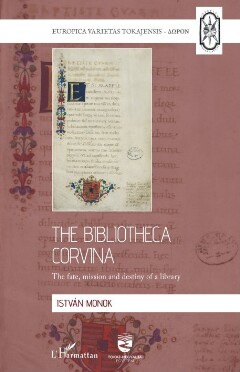Page 121 [121]
The book culture of the royal court of Buda was not limited to the decorative
codices of the Bibliotheca Corvina, the series of symposiums and scholarly debates
based on it. We know that there was a separate library for the court clergy near
the royal chapel. Most of its volumes were undecorated paper codices, and its the¬
matic focus differed significantly from the inventory preserved in the halls of the
Bibliotheca Graeca and Bibliotheca Latina, consisting of mainly theological texts.
The disintegration of the renowned collection at the beginning of the war
against the Ottoman Turks (Battle of Mohacs, 1526, and the capture of Buda,
1541) caused a European echo, due in part to the commiserating texts of con¬
temporary humanists. From then on, obtaining pieces from the former royal li¬
brary was a tempting goal for bibliophile collectors. However, in the Hungarian
Kingdom, and later in the Principality of Transylvania, the idea of restoring the
unity of the Bibliotheca Corvina became linked to the restoration of the unity and
independence of the Hungarian Kingdom. It became a national symbol, a symbol
of the golden age of the Hungarians. The one who can actualise such a library,
recovering as many corvina codices as possible, can provide the people of the coun¬
try with the same independence, greatness, and (imagined) prosperity as King
Matthias did.
In the 16th and 17th centuries, the restoration of the unity of the Kingdom and
the expulsion of the Ottomans were imagined in different ways. Everyone knew
that it could not be achieved on their own, but there were differences in opinion
about alliances. One example was a Catholic alliance under the leadership of the
Habsburgs (Kingdom of Poland, Venice, Papal States), another idea was that the
Protestant Principality of Transylvania unites the Hungarian Kingdom, allying
itself with Protestant powers and states threatened by the Turks. In any case, each
of the Hungarian political actors aimed to prove their worth by acquiring one (or
many) corvina. Several Hungarian aristocratic families acquired codices, and the
Transylvanian princes also sought to get ahold of them (Gábor Bethlen, György
Rákóczi I., Mihály Apafi1.). The latter repeatedly tried to get the Porte to return
these books, even for money. Similarly, the Jesuit order, the driving force behind
the re-Catholicisation of the Hungarian Kingdom, made plans to acquire the co¬
dices from the Turks, showing that “here, we were able to recover them.”*”!
However, after the Peace of Utrecht (1713), the Hungarian Kingdom became
the territory of the Austrian Habsburgs, as did Transylvania (Grossfiirstentum Sie¬
benbiirgen). The Bibliotheca Corvina, like the reign of King Matthias, became a
symbol of Hungarian independence. To counteract this, the Habsburg court tried
to make the library and its destiny part of the common cult of the Habsburg Em¬
pire since they were the ones who ousted the Turks. After 1686, when Buda, the
medieval capital, was recaptured from the Turks, the catalogue of books found
there*” was presented to the European scholarly public as the remains of the Bib/i¬
1 Cr. Monox 2002, 33-41.
552 Priucius 1688.
119

